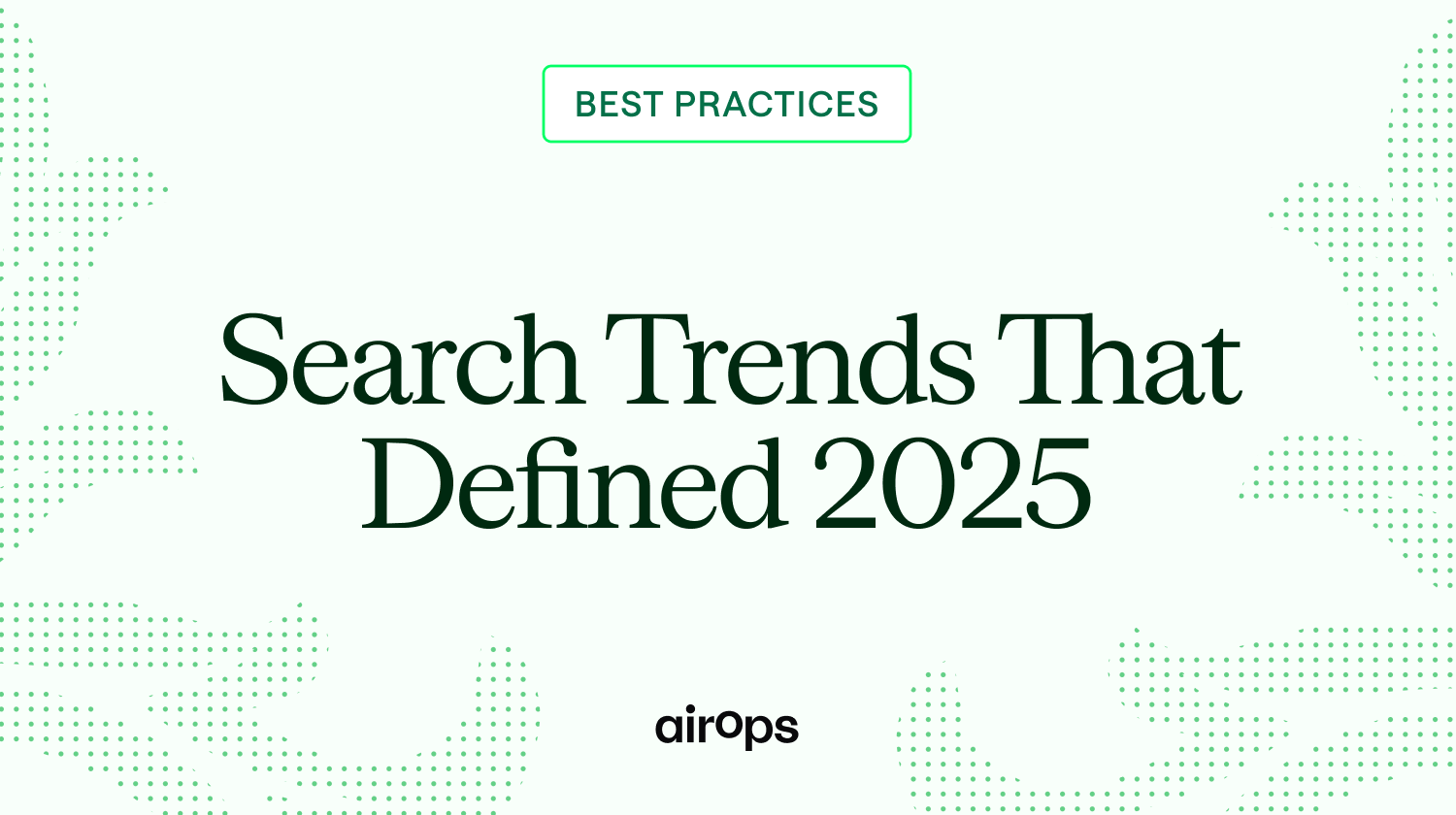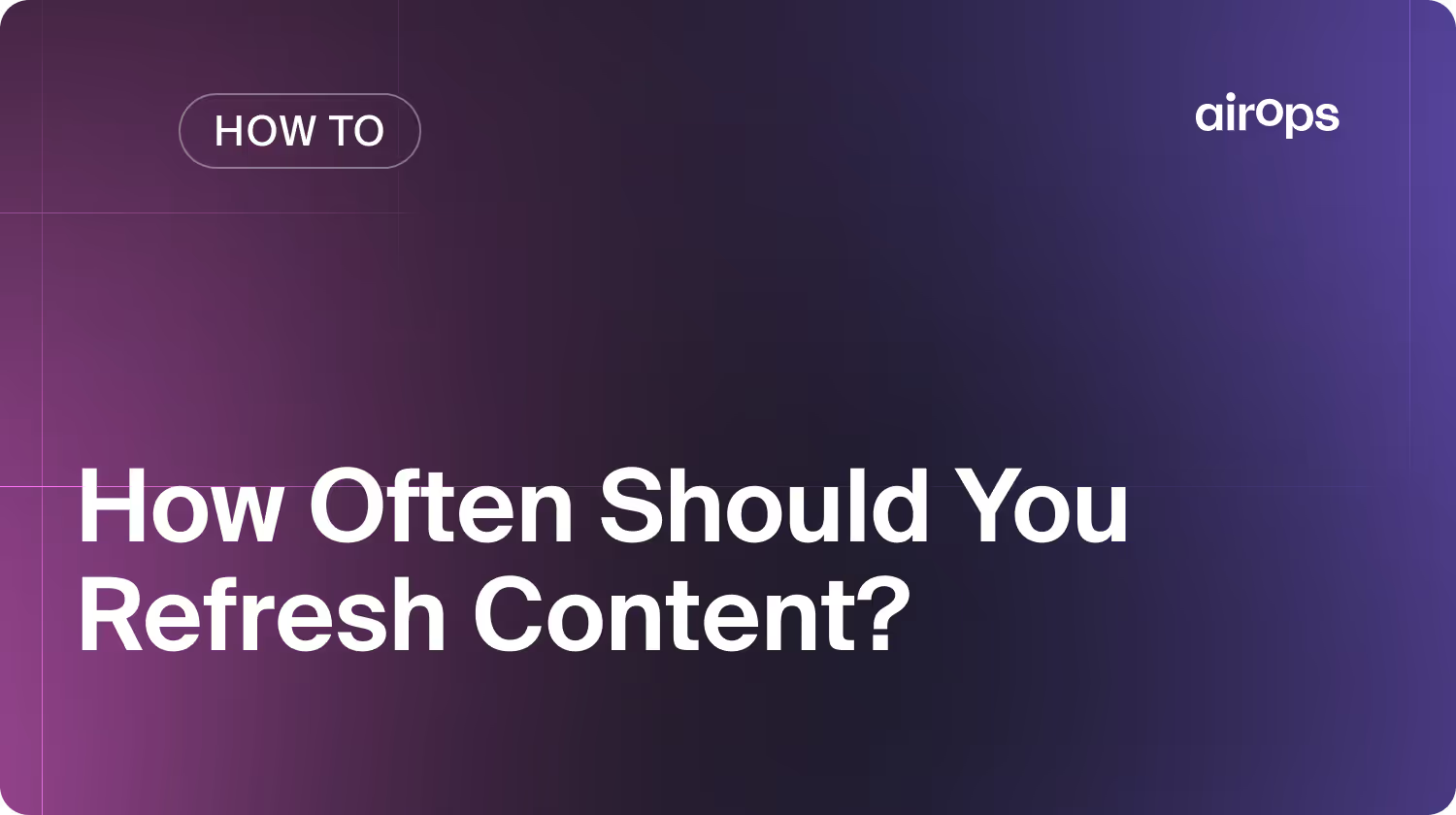How to Plan and Create a Content Marketing Strategy

A successful content marketing strategy aligns content with business goals, leverages audience insights, and uses AI-powered tools for scalable growth.
Focus on clear objectives, data-driven planning, and workflow automation to maximize ROI and create a high-impact, scalable content engine.
This guide provides actionable steps and a checklist to help you build a content marketing strategy that drives measurable business results.
A content marketing strategy is the foundation of scalable, high-performing content operations. It connects your business goals to content execution—ensuring every blog post, video, or campaign drives measurable impact.
Without a documented strategy, teams risk wasting resources, creating inconsistent messaging, and missing key opportunities. With the right framework in place, you can attract the right audience, accelerate the buyer journey, and build lasting brand authority.
What Is a Content Marketing Strategy?
A content marketing strategy is a documented plan that outlines how your business will create, distribute, and manage content to achieve specific goals. The purpose is to attract, engage, and convert your target audience through consistent, valuable content.
A strong strategy aligns every piece of content with business objectives and ensures your team operates with clarity and focus. It defines why you’re creating content, who it’s for, and how it will drive results.
Key Components of a Content Strategy
Defined Business and Marketing Goals: Set clear objectives that content should help achieve—such as brand awareness, lead generation, or customer retention.
Audience Research and Personas: Develop detailed profiles of your ideal customers based on behavior, needs, and preferences.
Content Themes, Topics, and Formats: Identify the types of content you’ll create (e.g., blog posts, videos, guides) and the themes that align with audience interests.
Channel and Distribution Strategy: Decide where and how you will publish and promote content—such as your website, email, LinkedIn, or YouTube.
Content Creation Workflows: Establish clear processes, roles, and tools for content production, editing, approval, and publishing.
Performance Metrics and KPIs: Track success using data like traffic, engagement, conversions, and SEO rankings to guide future decisions.
For realistic targets, see these B2B SaaS content benchmarks (open dataset) covering posting cadence, % of content that ranks, CTR medians by intent, and time-to-rank.
By documenting your strategy, you create a roadmap that keeps your content consistent, purposeful, and effective.
Why Is a Content Marketing Strategy Important?
A content marketing strategy is essential because it transforms content creation from a reactive activity into a structured, goal-driven process. Instead of producing content ad hoc, your team works toward clear objectives with measurable impact.
Here’s why having a clear content strategy matters:
- It aligns content with business objectives: Every asset serves a purpose—whether driving awareness, generating leads, or supporting customer retention.
- It improves focus and resource allocation: With clear priorities, your team can concentrate on high-impact initiatives instead of chasing ad hoc ideas.
- It ensures consistency across channels: A unified strategy helps maintain a cohesive voice, message, and experience at every touchpoint.
- It enables performance tracking and optimization: Defined goals and KPIs allow you to measure results, identify what’s working, and refine your approach.
-
- As Neil Patel explains, “you need to define your goals clearly—whether it’s lead generation, brand awareness, or customer retention—before creating any content”
In short, having an established strategy behind your content ensures that every asset supports your broader business goals and contributes to long-term growth.
How to Create a Content Marketing Strategy
1. Set Clear Goals and Objectives
Start your content strategy by defining the specific outcomes your content should achieve. Goals give your strategy focus and allow you to measure success over time.
Use the SMART framework to set goals that are specific, measurable, achievable, relevant, and time-bound.
Examples of strategic content marketing goals:
- Grow organic traffic by 25% in six months
- Generate 100 qualified leads per quarter from gated assets
- Improve keyword rankings for priority topics within 90 days
- Reduce customer acquisition cost (CAC) through content-driven inbound
Then, map each goal to key performance indicators (KPIs) such as:
- Organic sessions and traffic trends
- Lead conversion rates from blog and landing pages
- Rankings and visibility for target keywords
- Engagement metrics like scroll depth or average time on page
These metrics help track progress and inform decision-making. Revisit your goals quarterly to ensure they remain aligned with your business priorities and content performance.
A clear goal structure anchors every other step in your content marketing strategy—from audience research to content planning and distribution.
2. Research and Understand Your Target Audience
Knowing your audience is the foundation of any effective content marketing strategy. If you don’t understand who you’re creating content for, you can’t create content that resonates—or converts.
Start by gathering both quantitative and qualitative insights:
- Use analytics tools like Google Analytics, HubSpot, or Hotjar to track user behavior and content performance.
- Conduct surveys, interviews, and review sales and support transcripts to identify pain points and common questions.
- Monitor platforms like Reddit, Quora, and LinkedIn for unfiltered conversations in your niche.
Then, build data-backed buyer personas that capture:
- Demographics: Age, location, job title, industry
- Behaviors: Content preferences, device usage, buying patterns
- Motivations: Goals, challenges, objections, and decision triggers
Use your buyer personas to inform your content topics, tone, format, and distribution channels.
As GetContrast notes: “You can’t scale what doesn’t resonate. Audience research is the foundation of scalable relevance.”
Revisit and update your personas regularly to keep your strategy aligned with evolving audience needs and preferences.
3. Conduct a Content Audit and Competitive Analysis
Auditing your existing content and analyzing your competitors helps identify strategic gaps and opportunities. This step ensures you invest resources where they will drive the most impact.
Run a Strategic Content Audit
Evaluate your content library to understand what’s performing, what’s outdated, and what’s missing.
- Identify top-performing pieces by traffic, conversions, and engagement.
- Flag outdated, underperforming, or redundant content for refresh or removal.
- Categorize content by topic, format, and funnel stage to spot imbalances.
Analyze Competitors to Find Gaps
Look beyond keywords and identify content areas your competitors dominate—or overlook.
- Map competitors’ top content by topic, format, and search intent.
- Identify questions your audience is asking that competitors haven’t answered well.
- Find opportunities to differentiate: better depth, unique formats, expert POVs.
Focus on content gaps that align with your strategic goals and audience needs. These insights will inform your editorial calendar and help you build a more competitive content footprint.
4. Determine Content Types and Formats
Select content formats that best engage your audience and support your goals.
Common content types and formats include:
- Blog Content: SEO-optimized articles that drive organic traffic and answer key questions.
- Video Content: Short-form and long-form videos for social media and deeper engagement.
- Interactive Content: Quizzes, calculators, and assessments to boost participation and lead generation.
- Buyer Intent Content: Buying guides, product comparisons, and customer reviews for e-commerce.
- Case Studies: Real-world success stories that build credibility and trust.
- Visual Data: Infographics and data visualizations to make complex information accessible.
Choose a mix of evergreen and timely content to maintain relevance and authority.
5. Establish a Content Creation Process
A repeatable content creation process is essential for scaling your strategy and maintaining quality as your output grows. Without clear roles and workflows, bottlenecks and inconsistencies can derail execution.
Start by defining responsibilities across your team:
- Who owns each stage—ideation, drafting, editing, design, approval, and publishing?
- What tools and templates will streamline collaboration and reduce friction?
- How will content requests and briefs be submitted, tracked, and prioritized?
Next, document your workflow in a collaborative platform such as Notion, ClickUp, or Airtable. Be sure to include:
- Comprehensive content briefs
- Step-by-step review and approval checklists
- Clear publishing timelines and detailed content specifications
As GetContrast puts it: “Scaling content isn’t about doing more. It’s about doing more with less friction—through workflows, templates, and automation.”
A well-defined process ensures consistency, eliminates bottlenecks, and enables your team to execute faster without sacrificing quality—core traits of high-performing SEO and content teams.
6. Develop a Content Calendar
A content calendar turns your strategy into an actionable plan. It helps you organize topics, assign responsibilities, and publish content consistently across channels.
A well-structured calendar should include:
- Content titles or working headlines
- Target keywords and search intent
- Assigned author or content owner
- Format type (e.g., blog, video, guide)
- Funnel stage or persona targeting
- Planned publish date and distribution channels
Balance evergreen content that compounds over time with seasonal, newsworthy, or campaign-driven pieces that capture timely attention. Align each item on your calendar with your goals, personas, and funnel stages to ensure your publishing cadence drives strategic impact.
A content calendar not only brings visibility and accountability to your team—it also helps you identify gaps, manage resources, and maintain momentum.
7. Optimize Content for Search Engines
Search engine optimization (SEO) ensures your content is discoverable by the right audience at the right time.
Content optimization for search engines ensures it reaches your audience when and where they’re searching. But modern search isn’t limited to Google. To stay competitive, your strategy should be SEO and AEO optimized to ensure discoverability in both traditional SERPs and answer engines like ChatGPT, Perplexity, and Claude.
Optimize your content strategy by:
- Targeting search intent: Focus on queries your audience is actually asking and provide clear, concise answers.
- Using structured formatting: Organize content with keyword-rich headings (H1–H3), short paragraphs, and scannable lists.
- Building semantic depth: Incorporate related entities, internal links, and supporting context to improve relevance.
- Improving technical performance: Ensure fast load times, mobile responsiveness, and proper alt text for accessibility.
- Adding extractable elements: Use direct answers, clear definitions, and schema markup to support AEO visibility in AI-driven results.
Including SEO best practices into your strategy helps content rank higher, attract organic traffic, and build long-term authority—without relying solely on paid channels.
How does Answer Engine Optimization (AEO) impact a content marketing strategy?
AEO shifts your content strategy toward creating clear, structured, and extractable content that AI systems can surface and cite. This means prioritizing concise answers, semantic formatting, and schema markup—so your content is eligible to appear in tools like ChatGPT, Perplexity, and Google AI Overviews. AEO enhances visibility beyond traditional search by aligning content with how users now consume information through AI-driven interfaces.
8. Use AI to Scale and Systemize Your Strategy
AI enables content teams to scale faster by reducing manual work, improving consistency, and speeding up research and production cycles. When used strategically, AI content becomes a multiplier for your content marketing efforts—allowing teams to move faster without sacrificing quality.
Here’s how AI supports a scalable content strategy:
- Automates content ideation by identifying trending topics, surfacing content gaps, and generating keyword clusters.
- Accelerates production with AI-generated outlines, drafts, meta descriptions, and variations tailored to audience segments or formats.
- Standardizes voice and tone with brand style guides and approval workflows powered by AI checks and recommendations.
- Optimizes performance by analyzing what content drives results and suggesting data-backed improvements.
Leading teams are already using AI-powered content scaling strategies to operationalize content at scale—without sacrificing quality or brand alignment.
The key to success is pairing AI automation with human oversight. Let technology handle the repetitive work—so your team can focus on creativity, storytelling, and strategic execution.
How Often Should I Update My Content Marketing Strategy?
Updating your content marketing strategy should occur regularly, ideally on a quarterly basis, to ensure it remains aligned with changing market conditions and audience needs.
Create a Content Strategy That Drives Measurable Impact
A well-executed content marketing strategy turns content into a reliable engine for growth. By aligning your goals, audience insights, and workflows, you ensure every asset drives measurable impact.
To build a scalable and effective strategy, remember to:
- Set clear, business-aligned goals
- Ground your planning in audience and competitive research
- Define your content formats, workflows, and channels
- Use a documented calendar to stay organized and consistent
- Optimize content for discoverability and performance
- Leverage AI tools to scale efficiently without sacrificing quality
How AirOps Can Help Your Team Scale Content Marketing Initiatives
AirOps empowers businesses to create, optimize, and scale content with AI-driven workflows, content refreshes, seamless integrations, and Power Agents to help you scale content quickly–without sacrificing quality.
Ready to create a content strategy that drives impact? Book a strategy session with AirOps today and discover how to build a scalable, high-impact content strategy for your business.
Win AI Search.
Increase brand visibility across AI search and Google with the only platform taking you from insights to action.
Get the latest on AI content & marketing
Get the latest in growth and AI workflows delivered to your inbox each week
.avif)





